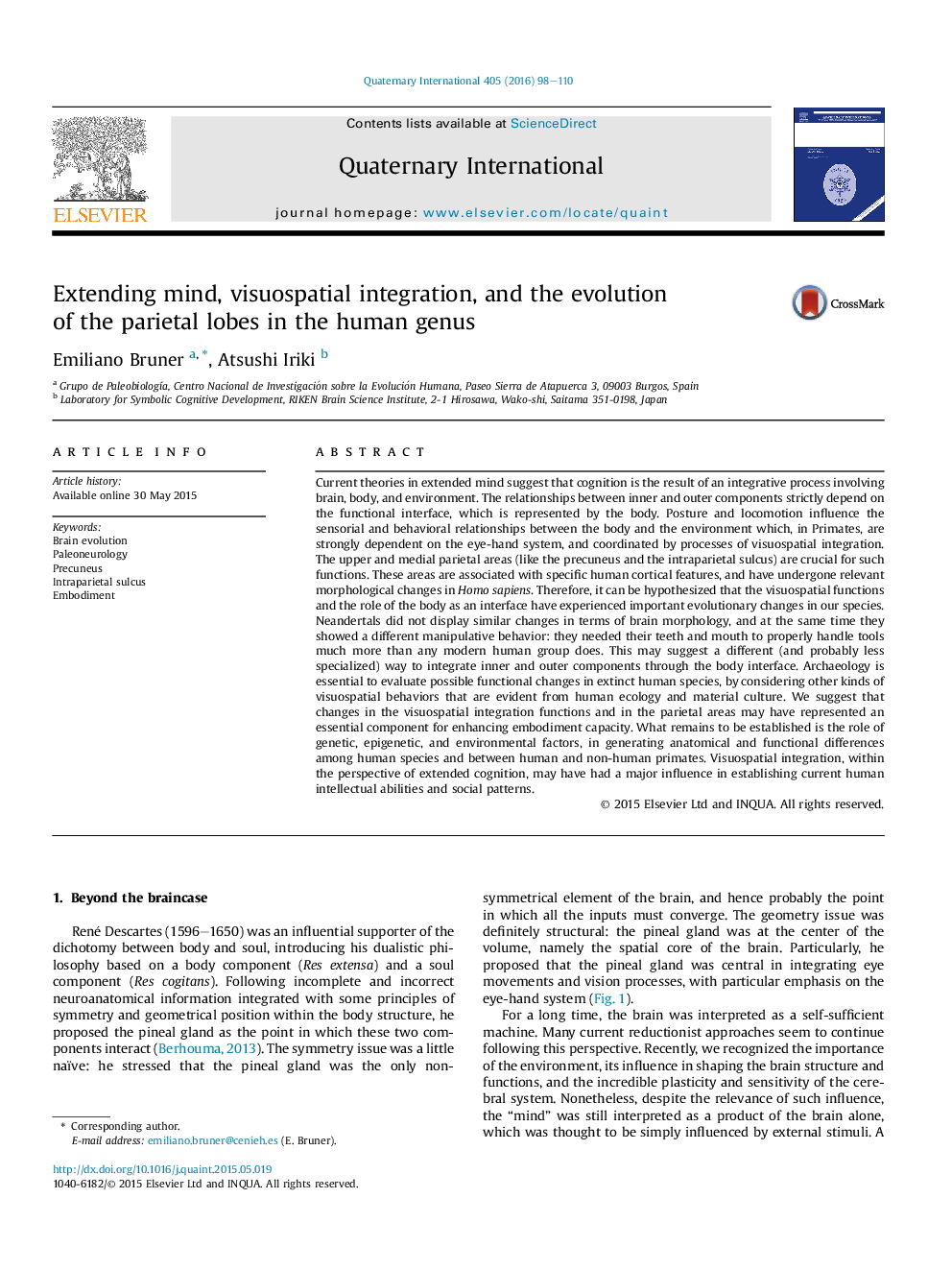| کد مقاله | کد نشریه | سال انتشار | مقاله انگلیسی | نسخه تمام متن |
|---|---|---|---|---|
| 10500909 | 944456 | 2016 | 13 صفحه PDF | دانلود رایگان |
عنوان انگلیسی مقاله ISI
Extending mind, visuospatial integration, and the evolution of the parietal lobes in the human genus
ترجمه فارسی عنوان
گسترش ذهن، یکپارچگی فضایی و تکامل لبه های تارتایا در جنس انسان
دانلود مقاله + سفارش ترجمه
دانلود مقاله ISI انگلیسی
رایگان برای ایرانیان
کلمات کلیدی
موضوعات مرتبط
مهندسی و علوم پایه
علوم زمین و سیارات
زمین شناسی
چکیده انگلیسی
Current theories in extended mind suggest that cognition is the result of an integrative process involving brain, body, and environment. The relationships between inner and outer components strictly depend on the functional interface, which is represented by the body. Posture and locomotion influence the sensorial and behavioral relationships between the body and the environment which, in Primates, are strongly dependent on the eye-hand system, and coordinated by processes of visuospatial integration. The upper and medial parietal areas (like the precuneus and the intraparietal sulcus) are crucial for such functions. These areas are associated with specific human cortical features, and have undergone relevant morphological changes in Homo sapiens. Therefore, it can be hypothesized that the visuospatial functions and the role of the body as an interface have experienced important evolutionary changes in our species. Neandertals did not display similar changes in terms of brain morphology, and at the same time they showed a different manipulative behavior: they needed their teeth and mouth to properly handle tools much more than any modern human group does. This may suggest a different (and probably less specialized) way to integrate inner and outer components through the body interface. Archaeology is essential to evaluate possible functional changes in extinct human species, by considering other kinds of visuospatial behaviors that are evident from human ecology and material culture. We suggest that changes in the visuospatial integration functions and in the parietal areas may have represented an essential component for enhancing embodiment capacity. What remains to be established is the role of genetic, epigenetic, and environmental factors, in generating anatomical and functional differences among human species and between human and non-human primates. Visuospatial integration, within the perspective of extended cognition, may have had a major influence in establishing current human intellectual abilities and social patterns.
ناشر
Database: Elsevier - ScienceDirect (ساینس دایرکت)
Journal: Quaternary International - Volume 405, Part A, 16 June 2016, Pages 98-110
Journal: Quaternary International - Volume 405, Part A, 16 June 2016, Pages 98-110
نویسندگان
Emiliano Bruner, Atsushi Iriki,
